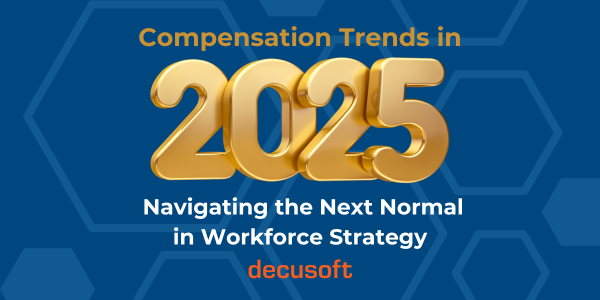Investment banking firms, banks, private equity, hedge funds, credit firms, and every financial service organization are looking to update and improve their internal systems and processes. Compensation management in the banking sector is no different. Compensation managers for the banking sector must balance the needs of shareholders, investors, and customers when creating compensation plans.
A well-researched compensation management strategy helps you to fulfill pay parity and other critical goals while also retaining talent and rewarding employees for their hard work. Designing an efficient compensation management plan may also aid in attracting and retaining personnel and allowing you to stay flexible as market conditions change.
What Is Banking Compensation Management?
Compensation management is the practice of rewarding employees for their labor through several methods. A well-thought-out compensation management strategy guarantees that your company’s pay in terms of wages and bonuses is competitive, reasonable, and equal compared to others in the industry.
Your compensation management program should be tailored to the demands of your company’s chief executive officers and reviewed regularly. Pay management officers should be competent to evaluate employment data, understand industry laws and regulations, and manage various complicated compensation and benefits administration tasks.
Although many firms use similar approaches to structuring compensation plans, each organization is unique, at the end of the day, and must develop its own compensation management approach. The banking industry is very competitive, and compensation accounts for 70% of an organization’s total labor cost. The best compensation structure will benefit all levels of the organization, from shareholders to executives, and help meet company-wide goals.
Compensation and Compliance
Be mindful of the regulations placed on compensation in the banking industry. As rules and regulations change over time, be aware of how your organization can stay competitive, creative, and remain compliant with federal laws and regulations on incentive compensation in the banking industry. In response to the 2008 financial crisis, two regulatory requirements were placed on the banking industry. The FDIC states that banking institutions should do the following to remain compliant with incentive compensation laws:
- Provide employees incentives that appropriately balance risk and reward
- Remain compatible with adequate controls and risk-management
- Be supported by strong corporate governance, including active and effective oversight by the organization’s board of directors
Under the Dodd-Frank act, excessive incentive compensation has been discouraged. The Wall Street Reform and Consumer Protection Act determined financial institutions must follow risk-appropriate incentive program design backed by strong corporate governance and risk management strategies. After these regulations passed many organizations had to take the time to restructure their incentive programs to remain competitive and compliant.
Creative Incentive Planning
The form of the incentive compensation package should benefit both short and long-term profitability and long-term growth, earning stability, and employee retention. Short-term profitability, for example, is rewarded with basic pay and a bonus based on company performance. Long-term growth and stability are rewarded with restricted stocks, stock options benefit packages, and pension plans, among other benefits. Consider the demographic of your organization before determining the performance-based incentive rewards for top performers.
Ask these questions when creating your incentive plan:
Internal:
What will attract the best talent?
What will motivate people to continue their exemplary work?
What will retain talent?
What will drive corporate performance?
What will drive our executives to achieve strategic objectives?
What needs to be accomplished this year, and how can we leverage this with compensation?
External:
What are our competitors doing?
What are the trends or norms in our industry?
What compliance requirements are we subject to?
What do our shareholders think of this plan?
What do our other external partners and stakeholders think of our compensation plan?
Executive Compensation in Banking
The regulations passed after the financial crisis seek to prohibit banks from engaging in two types of behavior: 1) seeking short-term profits at the price of the organization’s long-term financial health, and 2) taking reckless or excessive risks that might threaten the organization’s safety and soundness. CEOs are encouraged to increase profits in the short term through well-designed pay schemes.
They are also made partial long-term owners in the business through stock grants and stock options, giving them a direct method to benefit from incremental increases in the firm’s worth. But short-term gains should not be prioritized over long-term investments if they are too far in the future, as this diminishes overall performance.
Compensation Strategy: Benefits
A benefits package for employees is an integral part of your entire compensation plan. Today, benefits and perquisites account for a decreasing fraction of total compensation for CEOs. Today’s incentives are usually supportive of executives’ well-being and efficiency and help retain employees.
These benefits can include:
Flexible time off
Flexible working hours
Stock options/equity
Fully covered healthcare
Matching 401k
Other retirement plans
Maternity and paternity leave
Transit reimbursement
Work from home
Unlimited PTO
Child care reimbursement
Learning seminars
Wellness benefits
Student loan reimbursement
Education reimbursement
Profit-sharing
Other employee benefits
Compensation and Incentive Alignment
Short-term profitability, for example, is rewarded with basic pay and a bonus based on the company’s recent success. Still, long-term growth and stability are rewarded with restricted stocks, stock options, benefits packages, pension plans, and so on. Meanwhile, pay systems that excessively reward short-term success (for example, through bonuses) may encourage managers to take risks that enhance current profits but jeopardize long-term financial health. After all, executives do not have to stay with the same company for the rest of their careers.
Long-Term Incentives
A long-term incentive plan (LTIP) is a business-wide incentive plan that pays employees for achieving defined goals that provide value to the firm. In a typical LTIP, the employee, who is generally a senior executive, must adhere to a set of regulatory criteria or conditions to be eligible for the bonus at the end of the success cycle.
Bonuses are always paid in cash and are paid in addition to the executive’s base salary. Private and publicly traded businesses use discretionary pay plans for banking organizations based on a set of performance indicators.
Deferred Compensation Plans
The process of reserving a portion of an employee’s salary to be distributed at a later period is known as deferred compensation. These payments are generally made in the form of pensions, retirement programs, or stock options. Taxes on deferred compensation programs are not paid until the funds are distributed. Deferred compensation plans, commonly known as DCPs or elective deferral programs, are a type of deferred compensation plan (EDPs).
Short-Term Incentives
Employees are paid for completing the company’s short-term strategic goal based on the accomplishment of short-term incentive milestones, often known as yearly compensation, by the board appointment committee.
Conclusion
Compensation administration is one of the most challenging tasks for an HR department to perform, especially in highly competitive and regulated areas like banking. DecuSoft’s Compose can help your organization perform compensation management and analysis efficiently from a single dashboard. Our new Dashboard Analytics achieves this goal like no one else can. This will become an indispensable part of your compensation process.
The dashboard is easy to use, role-specific, viewed with the Comp Grid, and most importantly, updates in real-time. This means that planners, managers, human resource management professionals, and the compensation analyst teams can view up-to-date analytics during the compensation cycle and without having to refresh and distribute the reporting themselves – all within one system. Your organization’s compensation analysis team needs DecuSoft, today.




